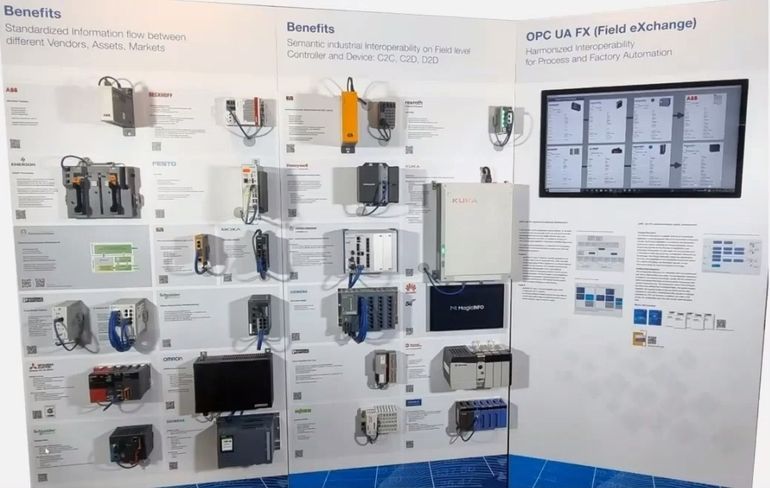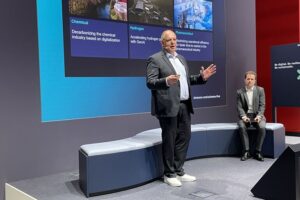Three years after its launch, the OPC Foundation‘s Field Level Communications (FLC) initiative has completed the second release candidate of the OPC UA FX (Field exchange) specifications and has started the review and release process for them. In addition, a multi-vendor demo for field level communications with controllers and network infrastructure components of 20 companies has been realised to showcase the cross-vendor interoperability of automation components.
The release candidate of the Field Level Communications Initiative consists of four specification parts (Parts 80–83) and focuses on communication between automation components to exchange process data and configuration data using OPC UA Client/Server and PubSub extensions in combination with peer-to-peer connections and basic diagnostics:
- Part 80 (OPC 10000–80) provides an overview and introduces the basic concepts of using OPC UA for field level communications
- Part 81 (OPC 10000–81) specifies the base information model and the communication concepts to meet the various use cases and requirements of factory and process automation.
- Part 82 (OPC 10000–82) describes networking services, such as topology discovery and time synchronisation
- Part 83 (OPC 10000–83) describes the data structures for sharing information required for offline engineering using descriptors and descriptor packages.
Multi-vendor interoperability demo
For this year‘s SPS in Nuremberg, a multi-vendor interoperability demo has been implemented, combining components from a total of 20 manufacturers – among them the world’s largest automation suppliers – to enable cross-vendor data exchange via OPC UA and the extensions for the field level, OPC UA FX (Field exchange). The focus of the interoperability demo is on horizontal communication between automation components, i.e. controller-to-controller (C2C) communication. With the UAFX extensions, the controllers are able to exchange process data with other controllers using UAFX Connections and PubSub mechanisms. In the demo itself, process data is exchanged via UDP/IP using wired Ethernet or Ethernet TSN, as well as in combination with a 5G wireless connection.
Connected via so-called UAFX Connection Managers
In the demo, the controllers act as UAFX Publisher and/or UAFX Subscriber, which exchange data via UAFX Connections. The controllers are configured and interconnected via so-called UAFX Connection Managers, which are either integrated into the controller or implemented as an external software component. The Connection Managers used were implemented by Siemens and Unified Automation. All controllers are monitored in real time via a central dashboard which visualises the respective status, selected process data and other information from the UAFX asset information model of the automation components. Participants in the demo are the manufacturers: ABB, Beckhoff, Bosch Rexroth, B&R, Emerson, Festo, Honeywell, Hirschmann/Belden, Huawei, Kuka, Mitsubishi, Moxa, Omron, Phoenix Contact, Rockwell Automation, Schneider Electric, Siemens, Unified Automation, Wago and Yokogawa.
Two additional demos
Two additional demos were implemented to highlight two highly relevant aspects for field level communications: Firstly, a multi-vendor demo demonstrating deterministic transport in a converged network based on OPC UA over TSN using the UAFX extensions with a direct Layer 2 mapping to optimise the efficiency for high-performance real-time applications. Secondly, the prototype of a Safety Testing Tool which will be used for development-accompanying testing and certification of OPC UA Safety devices based on the new OPC UA Safety Specification which is now also supporting PubSub and UAFX.
Peter Lutz, Director Field Level Communications of the OPC Foundation says: “We are happy about the progress that our working groups have made over the last months, despite Covid-19 and the associated restrictions. The completion of the second release candidate and an impressive multi-vendor live demo is a major achievement because the specifications are now mature so that the member review process could be started.”









